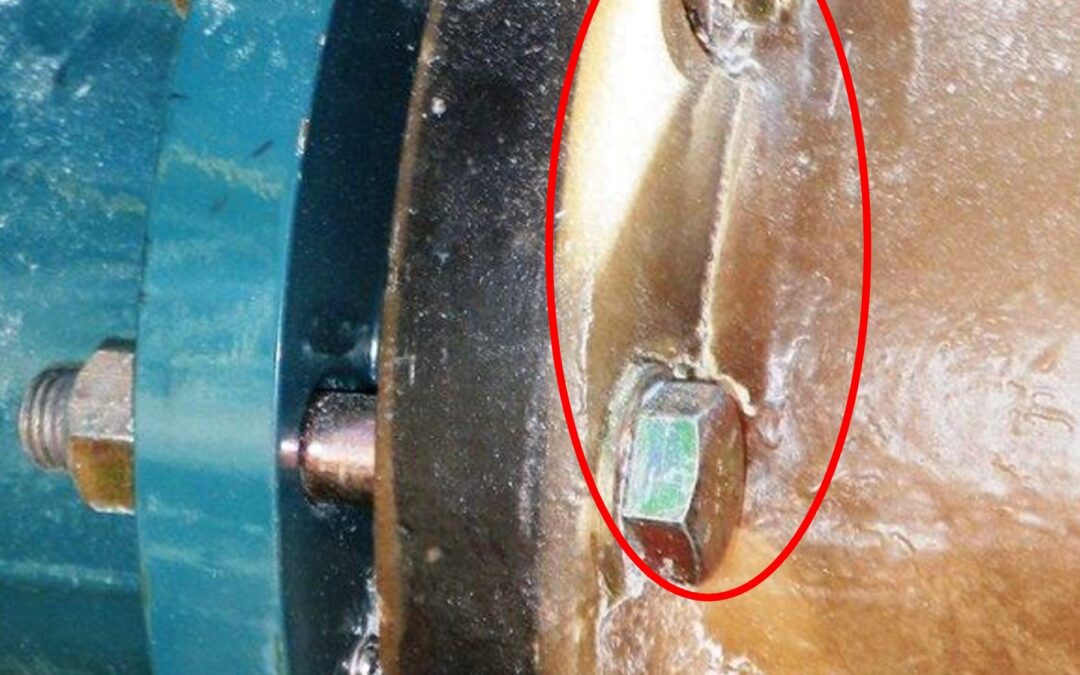In today’s world of “just in time” scheduling for maintenance or replacement of equipment, it is critical to have good historical inspection data to reduce the risk of unexpected failure.
Fiberglass Reinforced Plastic (FRP) equipment such as storage vessels started coming into industrial marketplaces during the 1960’s. With just over 50 years of historical industry data on FRP, the broad knowledge base for inspections is nothing like that which exists for steel and other metals which have several hundreds of years of data to draw from. Due to the relatively new nature of FRP equipment and the limited amount of historical data there is to draw experience from, it is critical that the company inspecting your FRP equipment understands how FRP equipment interact with other plant services in addition to understanding the FRP equipment being inspected.
With FRP equipment, historical knowledge is just as important as any single years inspection visit. FRP equipment failures are rarely the swift “catastrophic” types of failures. Quick catastrophic failures of FRP equipment typically result from a failure of an outside safety system, such as a vacuum breaker or pressure relief device which allows the FRP equipment to see forces much greater than the design conditions allowed for. The most common failures in FRP equipment are due either to corrosion, or from stresses such as vibration or bending from associated equipment.
For example; if you saw the hairline crack in the neck area of the flanged FRP nozzle shown to the right, you might assume the nozzle was about to burst from pressure! This flange would then be immediately replaced. Perhaps however, the crack you saw was actually caused by the bending force from bolting the FRP flange to a raised metal flange face. You might replace the cracked FRP flange, only to find a similar crack return once the new FRP flange was bolted up to the existing raised face metal flange. Understanding the system demands on FRP equipment is as important in an inspection as finding the obvious cracks.
Today’s FRP equipment is much different than the items which were originally produced in the 1960’s. Proper inspections of today’s FRP equipment must take many things into account:
- The method by which the equipment was fabricated. Was it made by hand or by machine?
- Overall workmanship. Are there large entrapped air voids evident? Dry spots?
- The current length of service of the equipment, and the expected remaining service life. It makes little sense to recommend replacement of an FRP storage vessel if a process change will remove the vessel from service prior to the next outage.
- What raw materials the equipment was produced from. Are the part’s raw materials capable of handling the intended service?
- Is the equipment supported correctly? Are there large valves hanging from FRP flanges not intended to support loads?
- The original intended use of the equipment vs. the actual current use of the equipment. Was this an old water storage vessel that is now being used to store Sulfuric Acid due to a process change?
- Any upset conditions which have occurred during the life of the equipment. The inspection will only be as good as the information you provide to the inspector during the visit.
The company performing your FRP inspections must understand the different manufacturing methods of FRP equipment, because these manufacturing differences can relate to successful service from the equipment. FRP manufacturing has evolved from using buckets and brushes to paint resin onto reinforcement layers covering a mold, to the current generation of 3 axis winding machines and vacuum infused laminates. However, filament wound (machine made) FRP piping is still not commonly used in many Pulp and Paper Mill applications due in part to the fact that FRP piping produced by hand typically contains more resin in the completed laminate. Resin provides the corrosion resistance in FRP equipment, therefore the higher resin content in FRP piping produced by hand provides more corrosion resistance throughout the pipe wall.
FRP equipment is often used due to its outstanding corrosion resistance to most chemicals, however there are some chemicals in which FRP does not perform well. If a chemical used in contact with the FRP equipment is an oxidizer, then FRP may not be a good choice for that equipment application. The temperature range at which the equipment operates is another key to understanding how the equipment is performing. FRP equipment can be very sensitive to the heat, since the expansion rate of FRP equipment can be three (3) times the expansion rate of steel equipment. Recognizing the service and operating conditions the FRP equipment is subjected to, is part of truly understanding how the equipment is performing.
FRP equipment is typically designed for a 15 year or longer service life. This relatively long service life combined with the minimal maintenance requirements for FRP equipment, make it is easy to overlook the inspection of FRP equipment. Your facility may have a number of different pieces of FRP equipment such as Tanks, Piping, Scrubber and Absorber Vessels, Tank Linings, FGD Chimney Liners, Fan Housings, Grating, Pultruded Shapes such as I-beams and cable trays or one of many, many other applications which require corrosion resistant equipment. As you might imagine, each of these different types of equipment requires a different type of inspection. Make sure your inspection company can provide you with the competent information you need to make sound maintenance decisions.


Recent Comments